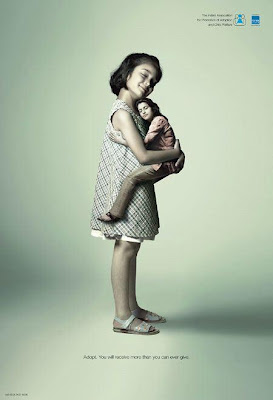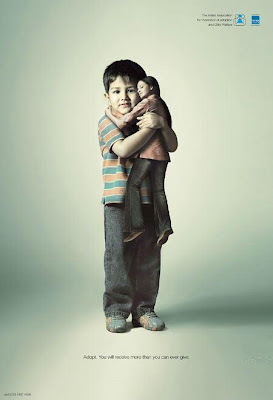Print Ad Archive : Ads 73 thru 79

Print Ad Archive : Ad 73
This may be one of the most creative print ads in this print ad archive. It's for sony's product "Bravia" and it's advertising it's vibrant colors.
Print Ad Archive : Ad 74
This is a very creative 3d advertisment. "If you really want to touch someone," the ad says, "send a letter." Not many better ways of getting the message across.
Print Ad Archive : Ad 75
Ad Archive : Ad 76
These two ads are promoting adoption. It's hard to read on ads this small, but if you enlarge the photo you will see that is says, "Adopt: You will recieve more than you can ever give!"
Print Ad Archive : Ad 77
I don't remember if I added this one another time or not and I don't feel like checking. So if I did, enjoy it a second time:)

Save water. Save Life. Awsome advertisment! Very effective way of communicating the idea trying to be presented.
Print Ad Archive Ads
72 Creative Advertising and Marketing Ideas, See the Rest
Ads 1 - 10 Ads 11 - 20 Ads 21 - 30 Ads 31 - 40 Ads 41 - 50 Ads 51 - 60 Ads 61 - 72
Additional Ads Not Part of this Archive
Print Ad Archive : Ads 73 thru 7912 Old Advertisements and Vintage Ads for Coke
Target Weekly Ad and/or Other Target Ads
Below is a List of My Most Read Entries
Search Engine Optimization
Presentation Skills & Public Speaking Presentation Tips & Ideas
Sample Marketing Plan IMC Integrated Marketing Communications
72 Examples of Best Print Advertisements
Business Letter Format/ Formal Letter Writing






